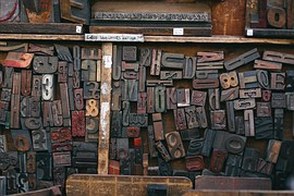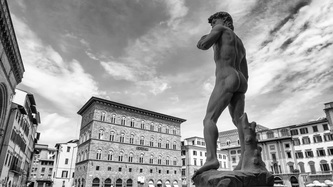TEXT STUDY: MIDRASH |
|
"DARSHENI!"
THE TORAH DEMANDS INTERPRETATION
|
It is said of the Torah that demands "Darsheni!" (Interpret me!") Both a genre of literature and a process of reading and interpreting that we continue to engage in today, midrash is the creative life force of Jewish text study. From the audacious to the insipid, from the insulting to the inspired, midrash brings us close to the text, grabs us by the hand and pulls us into the world of Jewish experience, ideas, and aspirations.
|
The Midrashic Imperative: An Overview of Traditional Jewish Text Study and InterpretationIs everything you’ve ever thought or been taught about the Torah actually midrash?! In our quest to unpack and decode the concept of midrash--the meaning of the term, the reading strategies it encompasses, the evolution of the literary genre, the social-cultural-political agendas it supports, the theological-legal-historical baggage it carries, and more—we ask: Is midrash mostly made up of fanciful stories and convoluted legal reasoning? Why did it evolve? Why do midrashim contradict each other? Can anyone create a midrash? Is every midrash valid? Is one midrash more valid/ true/ authoritative than another? Who decides that?
"The Fox's Chair" and Other Miniature MidrashimLike little gems, these very short stories reflect the brilliance of the Midrashists, Jewish scholars—many of whom lived more than 2000 years ago—who helped create the vast trove of Jewish legends and lore. The stories, rarely more than a few lines long, are dense with meaning and rich in the history and customs of ancient Judaism. Learn the stories of "The Ugly Man," "The Laughter of the Angel of Death," and "The Fox's Chair," among others, as well as the methods by which to decode them.
|
Cultivating Confusion: Biblical Motifs in the Poetry of Yehuda AmichaiIn his poem "From the Book of Esther I Filtered the Sediment..." contemporary Israeli poet Yehuda Amichai describes a cut and paste job he does on the Bible. He writes: "And with what was left, I pasted myself a new Bible./Now I live censored and pasted and limited and in peace." The depth of Amichai's Jewish cultural literacy and his extensive use of traditional sources (Biblical, rabbinic, liturgical) form a central rhetorical strategy in his work. Intentionally provocative, Amichai's engagement with Biblical verses, stories and motifs is breathtaking in its brilliant subversions that are often expressed in deceptively simple language, speaking as an ordinary everyman.
Plumbing Lessons for Beginners
|
EYE-OPENERS
READING THE BIBLE THROUGH VISUAL ART
|
For most of its history the Torah was “read” primarily through images carved in stone, pieced together from mosaics, and assembled in stained glass. The powerful hold these representations had on the popular imagination continues to impact our understanding of the Bible today. Yet, the role of the artist, as de facto interpreter of the text, is often overlooked. Through the study of texts and use of the basics of visual literacy we focus on the way these core stories have been represented in the arts as visual theology and see them in a new light.
|
Form and Function:
|
The Foregrounding and Foreshadowing of HagarThe fraught relationship between Abraham's wife and the maidservant who bears his first son is also the first Biblical story focused on the bond between two women. Unfortunately, it is a tragic model that won't be redressed even by the unique relationship of Naomi and Ruth at the end of the Torah. The contrast between the women in age, ethnicity, and status provides fertile ground for the imagination and artists from Rembrandt to Margaret Atwood have shared their unique visions of the rivalry between the Egyptian servant and her Hebrew mistress.
The Near-Sacrifice of Isaac
|

